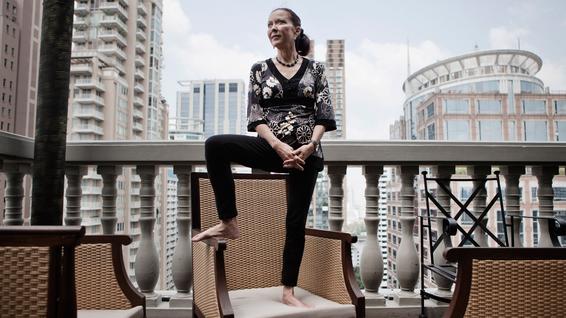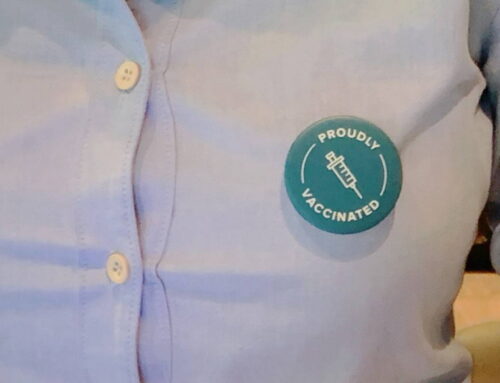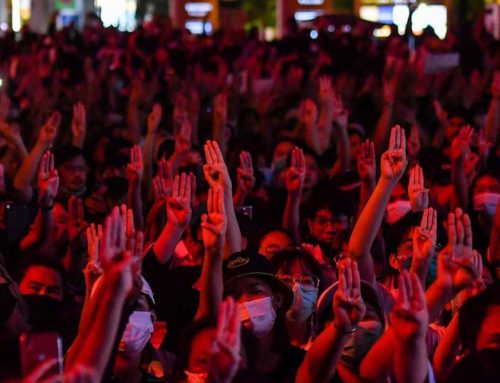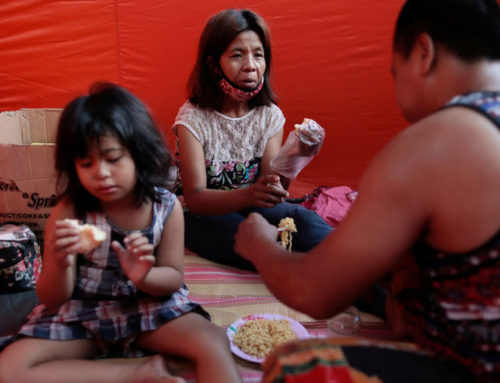Expat lives: Boomtown Bangkok
Tuk-tuks ply the streets just like 20 years ago – what’s changed is the soaring price of property, writes the FT’s regional correspondent{1st Photo Caption: Gwen Robinson: ‘The paradox is how little – as well as how much – has changed about life in the city, 22 years on’ © Giulio Di Sturco}
Life & Arts
Expat lives: Boomtown Bangkok
Tuk-tuks ply the streets just like 20 years ago – what’s changed is the soaring price of property, writes the FT’s regional correspondent
Gwen Robinson
JULY 20 2012
It is an odd feeling to return after two decades to a country where you once lived. When I landed in Thailand early this year to become the FT’s regional correspondent, I began a process of rediscovery that still yields daily disappointments as well as delights.
A walk past a parking lot that was once a picturesque canal is depressing. Discovering a favourite old noodle shop triggers a flood of memories. Fragments of Thai language, simple in structure but complex in tonal pronunciation, pop back in my head unexpectedly.
In 1990, I had left a Bangkok of just over 5m people that was evolving rapidly into a regional hub. When I returned in late 2011, it was like pressing “fast forward” on a video. The city’s population had swelled to an estimated 8.3m. The chaotic megalopolis of Greater Bangkok, including the industrial sprawl and rural communities of five adjacent provinces, is said to encompass 20m people.
Whenever I tell Bangkok expats that I am back after 22 years, they invariably say: “It must have changed completely since then!” The paradox is how little – as well as how much – has changed about life in the city. The transformations are either radical or astonishingly non-existent.
Yes, today’s Bangkok boasts the efficient and clean Skytrain, the elevated rail system. But the traffic seems as congested as ever – even at improbable times of day and night.
Most of the city’s klongs, or canals, have been cemented over, and gracious old houses and low-rise buildings pulled down to make way for an architectural “beauty parade” (some might call it an “ugly contest”) of ostentatious office towers, slick shopping malls and elaborate apartment blocks. In fashionable areas, restaurants and supermarkets offer almost any food you could want – at a price.
Yet if you ask an expat old-timer what they think has changed beyond the Skytrain and property development, they look nonplussed. “Well,” said one veteran, “at least on the sidewalks, you no longer fall into holes.”
Sidewalks, however, are still bumpy and often hazardous. Amid the soaring architectural fantasies are shabby low-rises, ramshackle huts and urban slums of decades ago. On hot nights, smells of garbage, sewage and the sickly sweet aroma of the durian fruit are as overpowering as ever.
Colourful tuk-tuks still ply the streets and motorbike boys in numbered waistcoats still hover at the main street corners. Flower sellers festoon the perimeters of the city’s many wats, or temples, hawking intricate perfumed wreaths. By night, massage shops tout traditional foot massages and food stalls spring up like young bamboo along certain streets.
In Bangkok’s many entertainment areas, stylish restaurants offer meals costing Bt3,000 ($95); yet a bowl of spicy noodles at a street stall can cost as little as Bt25 (80 cents), barely more than it did two decades ago. Such low-cost comforts are among the city’s charms. They certainly appealed after my years living in Tokyo, London, New York and Sydney.
But the price disparities also highlight a growing gap between the “haves” and “have nots”. The gap is most evident in the rise of “red shirt culture” – followers of former prime minister Thaksin Shinawatra, who focused on spending programmes for the poor. Red-shirt protests led to the street violence that erupted in 2010, killing more than 100 people and injuring thousands, as mobs descended on the shopping malls of central Bangkok, clashing with the military and the yellow-shirted supporters of the then-ruling Democrats.
The city centre became a battleground and Thailand, which promotes itself as the “Land of Smiles”, was portrayed as an unhappy place. True to one of its informal nicknames, “Teflon Thailand”, the turmoil subsided, the stock market bounced back and an election brought red-shirt icon Yingluck Shinawatra, Thaksin’s sister, to power in mid-2011.
Similarly, Bangkok has recovered with astonishing speed from the floods that inundated factories and homes last year, while the country’s economic growth is expected to recover from near zero to around 6 per cent.
But tensions remain. With the country’s adored king in ill health, a restive military and Thaksin’s moves to return from exile, it seems inevitable that they will explode again. If so, Thais will undoubtedly carry on and muddle through, as they have always done.
My hunt for an apartment taught me other big lessons about Bangkok today. Property prices have soared over two decades – mainly at the high end, where the rise has astonished even seasoned agents. One agent attributed the increase to wealthy Chinese investors wanting condominiums for investments or for shopping trips. “Westerners can’t afford these prices any more,” she added.
Thais, just like affluent Chinese, are drawn to shiny new things. Any Bangkok apartment older than 10 years is markedly cheaper than its newer counterparts. My soi, or street, hosts one of Bangkok’s priciest condo blocks where flats go for Bt200,000 ($6,400) per sq metre – a five-fold rise (or more) from 20 years ago. Yet rents in my 25-year-old block are well below $2,000 per month for a 180 sq metre apartment. The first time I lived in Bangkok, I shared with a friend a grandiose house that was ugly but comfortable (and improbably called “Lovely Mansion”) off Sukhumvit Road. Despite its ugliness, the house was well-built, with quality materials such as timber used throughout.
My new flat, too, has solid wooden floors, spacious rooms and quality fittings. Contemporary blocks – including the priciest ones – look slick but the ceilings are low, the rooms small and materials often cheap synthetics.
I recently walked down my old soi, only to find that Lovely Mansion had gone, replaced by a nondescript apartment block. As for Bangkok itself: it is no less or no more the “city of angels” – the meaning of its Thai name, Krung Thep – than it ever was.
……………………………………………………………..
Buying guide
Pros
● Good (and relatively good-value) schooling for expat children
● High standard of healthcare, with well-equipped hospitals and clinics
● Relatively low cost of living
Cons
● Complex immigration and work permit procedures
● Difficulty in obtaining mortgage finance for foreigners
● Occasional political instability – and, as in 2011, floods
What you can buy for …
$100,000 A 50 sq metre, one-bedroom condo in a low-rise building
$1m A 200 sq metre three-bedroom condo in a prestige development
Contact:
Source Link: FINANCIAL TIMES





